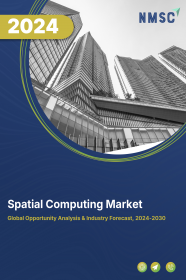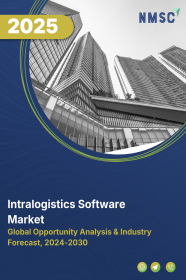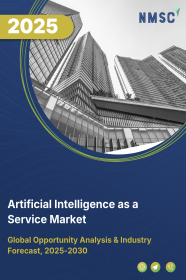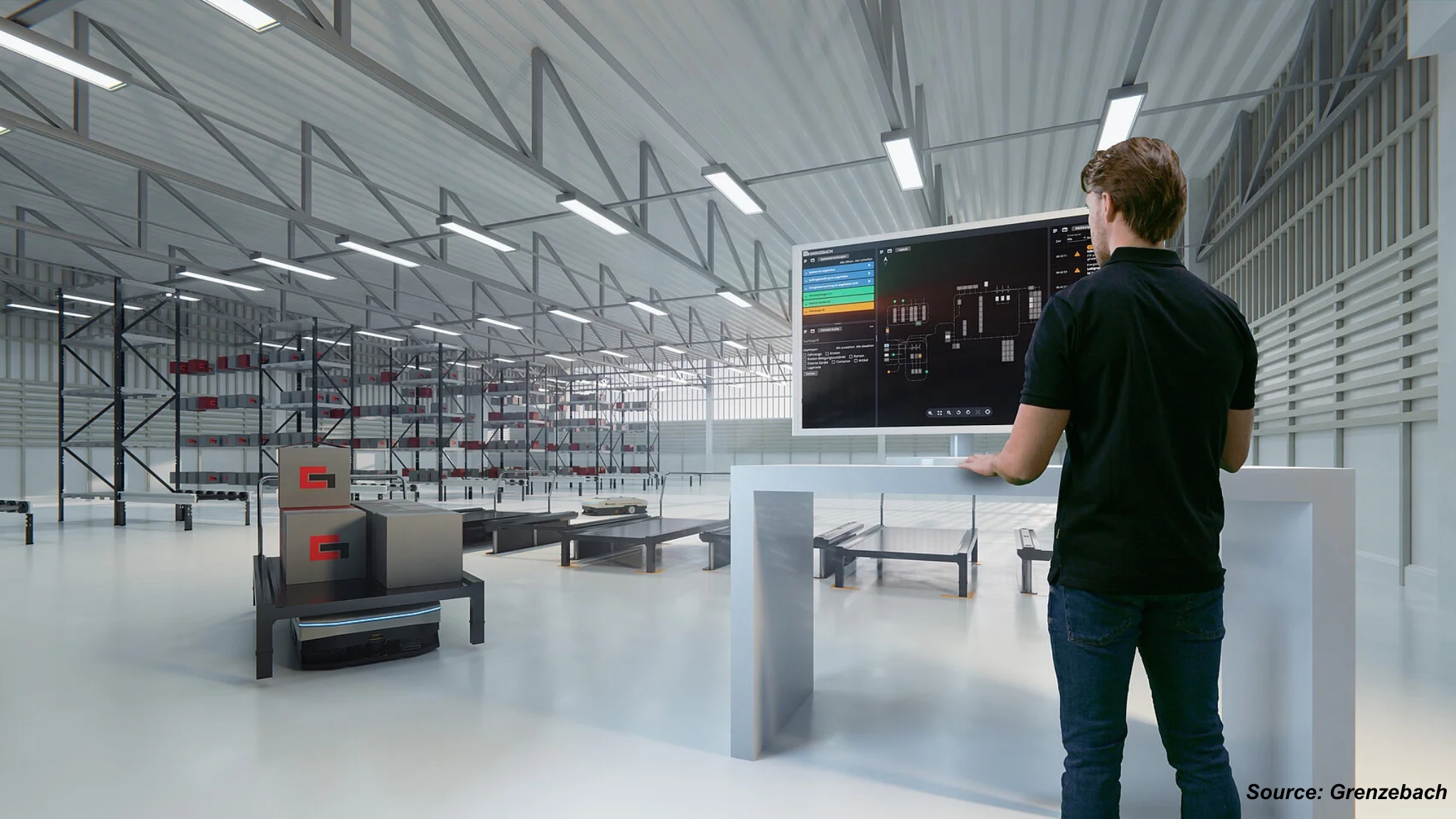
Spatial Computing Market by Component (Hardware, Software, and Services), by Technology (Virtual Reality, Artificial Intelligence, Internet of Things, Mixed Reality, Augmented Reality, and Others), and by End Users (Healthcare, Consumer Electronics, Automotive, Media & Entertainment, Construction, Aerospace and Defense, and Others)– Global Opportunity Analysis and Industry Forecast, 2024-2030
Spatial Computing Market Overview
The global Spatial Computing Market size was valued at USD 110.07 billion in 2023 and is predicted to reach USD 441.62 billion by 2030 with a CAGR of 22.0% from 2024 to 2030.
The spatial computing market also known as immersive computing market refers to the ecosystem of technologies that enable users to interact with digital content in a physical space, seamlessly blending augmented reality (AR), virtual reality (VR), mixed reality (MR), and other spatial mapping techniques. It operates by utilizing sensors, computer vision, and AI algorithms to analyze and understand the surrounding environment, allowing for real-time interaction with 3D objects and data.
The benefits of immersive computing include enhanced user engagement, improved training and learning outcomes, and increased operational efficiency by visualizing complex data. Compared to traditional computing methods, immersive computing offers a more intuitive and interactive experience, allowing users to perceive and manipulate information in a way that is natural and contextually relevant. Moreover, it represents a transformative approach to digital interaction, driving innovation across various industries by merging the physical and digital realms for richer user experiences.
Market Dynamics and Trends
The increase in the adoption of 5G technology enhances the demand for spatial computing by enabling faster data transfer rates, lower latency, and improved connectivity for devices. This advancement allows immersive computing applications, such as augmented reality (AR) and virtual reality (VR), to function more effectively and seamlessly in real-time environments. As per the report published by the 5G Americas, the global adoption of 5G technology reached around 2 billion with an additional new connection of around 185 million in the first quarter of 2024. The high bandwidth provided by 5G supports the integration of complex visual and spatial data, empowering developers to create more sophisticated and interactive immersive computing solutions, thereby boosting the market growth.
Furthermore, the growth of the global construction industry accelerates the demand for innovative solutions to improve project efficiency, accuracy, and collaboration, that in turn boosts the market growth. Spatial computing enables real-time visualization and interaction with 3D models, allowing construction professionals to optimize building layouts, detect potential issues early, and enhance collaboration across teams. According to the latest research of the Next Move Strategy Consulting, the global construction market reached around USD 2.31 trillion in 2023 and is anticipated to reach around 3.57 trillion by 2030 growing at a CAGR of 5.9%. As the global construction sector expands and embraces digital transformation, the integration of immersive computing becomes essential for optimizing project outcomes and maintaining a competitive edge.
Moreover, the growing gaming industry, driven by the rising spatial computing market demand for immersive gaming propels the demand for spatial computing technologies. Modern gaming consoles are increasingly incorporating advanced features such as immersive computing to create lifelike environments and enable users to interact with digital content in a 3D space.
According to the latest report of the PWC’s Global Entertainment & Media, the global videogame market generated around USD 257.10 billion in 2023 and is expected USD 321.10 billion by 2030, marking an increase of 25% within a span of 7 years. This shift towards more engaging gameplay not only enhances user experience but also encourages developers to invest in immersive computing innovations, such as advanced motion tracking, realistic simulations, and interactive environments.
However, high development costs associated with spatial computing restrain market growth, as creating advanced applications demands significant investment in technology, software, and skilled talent. This financial barrier limits access for smaller companies and startups with limited budget, thereby hindering the market growth.
On the other hand, the integration of edge computing in spatial computing is expected to create ample opportunities for market the forthcoming years. This advancement is anticipated to enhance spatial computing applications such as AR, VR, and MR by minimizing latency through real-time data processing closer to the source, leading to smoother experiences and supports complex operations in various industries.
Market Segmentations and Scope of the Study
The spatial computing market report is segmented on the basis of component, technology, end users and region. On the basis of component, the market is divided into hardware, software, and services. On the basis of technology, the market is classified into virtual reality, artificial intelligence, internet of things, mixed reality, augmented reality, and others.
On the basis of end users, the market is segmented into healthcare, consumer electronics, automotive, media & entertainment, construction, aerospace and defense, and others. Regional breakdown and analysis of each of the aforesaid segments include regions comprising North America, Europe, Asia-Pacific, and RoW.
Geographical Analysis
North America holds the dominant in spatial computing market share and is projected to maintain its dominance throughout the forecast period. This is attributed to the expansion of the gaming industry in the countries such as the U.S. and Canada that increases the demand for immersive and interactive experiences by gamers.
According to the latest report published by the American Gaming Association in 2023, the gaming industry of the U.S. contributes around USD 328.60 billion to the country’s economy in 2023. This heightened growth of the gaming industry drives innovation among developers to create more sophisticated games, thus fostering the adoption of immersive computing technologies in the region.
Additionally, government investment in artificial intelligence (AI) technologies in the region boosts the growth of the spatial computing market by fostering innovation and encouraging the development of advanced applications. For instance, in April 2024, Canadian government invested around USD 2.17 billion towards building computing capabilities and technological infrastructure for artificial intelligence. This increased focus on AI accelerates the creation of more sophisticated immersive computing solutions, ultimately expanding the market and its applications across various industrial sectors in the region.
On the other hand, the Asia-Pacific region is expected to show a steady rise in the spatial computing market growth. This is due to the growth of the automotive industry in the region that necessitates the need for advanced technologies to enhance vehicle design, production, and user experience. According to the India Brand Equity report 2024, the Indian passenger car market reached a value of USD 32.70 billion in 2021 and is further anticipated to surge to USD 54.84 billion by 2027. This significant growth of the automotive industry in the region propels the market growth to offer immersive experiences for drivers and passengers.
Moreover, the expansion of the construction industry boosts the market growth of spatial computing as companies increasingly adopt advanced technologies to improve project efficiency, accuracy, and collaboration. The latest report of the International Trade Administration states that China is the leading construction market in the world with overall investment in the new infrastructure reaching around USD 4.2 trillion by 2025. This growing investment in the construction sector drives the adoption of immersive computing for enhancing decision-making and reducing errors during planning and execution in the construction industry.
Competitive Landscape
Various key players operating in the spatial computing industry includes Microsoft Corporation, Google LLC, IBM Corporation, Apple Inc., Sony Corporation, Qualcomm Technologies Inc., NVIDIA Corporation, Varjo Technologies Oy, Meta Platforms Inc., Lenovo Group Limited and others. These companies are adopting strategies such as product launch to stay competitive and maintain their market positions.
For instance, in September 2024, Meta introduced the Quest 3S, a mixed-reality headset that offers upgraded features such as enhanced display quality, improved performance, and more immersive experiences. The device integrates spatial computing technologies, enabling users to interact within 3D spaces by enhancing their perception and engagement with digital content in the real world.
Furthermore, in February 2024, Apple launched Vision Pro, a groundbreaking device in the realm of spatial computing. Through this launch, the company aims to revolutionize user experiences by seamlessly blending the digital and physical worlds utilizing advanced technologies such as augmented reality (AR) and virtual reality (VR), enabling users to interact with digital content in immersive and intuitive ways.
Key Benefits
-
The report provides quantitative analysis and estimations of the spatial computing market from 2024 to 2030, which assists in identifying the prevailing market opportunities.
-
The study comprises a deep dive analysis of the current and future spatial computing market trends to depict prevalent investment pockets in the industry.
-
Information related to key drivers, restraints, and opportunities and their impact on the global market is provided in the report.
-
Competitive analysis of the players, along with their market share is provided in the report.
-
SWOT analysis and Porters Five Forces model is elaborated in the study.
-
Value chain analysis in the market study provides a clear picture of roles of stakeholders.
Spatial Computing Market Key Segments
By Component
-
Hardware
-
Software
-
Services
By Technology
-
Virtual Reality
-
Artificial Intelligence
-
Internet of Things
-
Mixed Reality
-
Augmented Reality
-
Others
By End Users
-
Healthcare
-
Consumer Electronics
-
Automotive
-
Media & Entertainment
-
Construction
-
Aerospace and Defense
-
Others
By Region
-
North America
-
The U.S.
-
Canada
-
Mexico
-
-
Europe
-
The UK
-
Germany
-
France
-
Italy
-
Spain
-
Denmark
-
Netherlands
-
Finland
-
Sweden
-
Norway
-
Russia
-
Rest of Europe
-
-
Asia Pacific
-
China
-
Japan
-
India
-
South Korea
-
Australia
-
Indonesia
-
Singapore
-
Taiwan
-
Thailand
-
Rest of Asia Pacific
-
-
RoW
-
Latin America
-
Middle East
-
Africa
-
Key Players
-
Microsoft Corporation
-
Google LLC
-
IBM Corporation
-
Apple Inc.
-
Sony Corporation
-
Qualcomm Technologies Inc.
-
NVIDIA Corporation
-
Varjo Technologies Oy
-
Meta Platforms Inc.
-
Lenovo Group Limited
REPORT SCOPE AND SEGMENTATION
|
Parameters |
Details |
|
Market Size in 2023 |
USD 110.07 Billion |
|
Revenue Forecast in 2030 |
USD 441.62 Billion |
|
Growth Rate |
CAGR of 22.0% from 2024 to 2030 |
|
Analysis Period |
2023–2030 |
|
Base Year Considered |
2023 |
|
Forecast Period |
2024–2030 |
|
Market Size Estimation |
Billion (USD) |
|
Growth Factors |
|
|
Countries Covered |
28 |
|
Companies Profiled |
10 |
|
Market Share |
Available for 10 companies |
|
Customization Scope |
Free customization (equivalent up to 80 working hours of analysts) after purchase. Addition or alteration to country, regional, and segment scope. |
|
Pricing and Purchase Options |
Avail customized purchase options to meet your exact research needs. |

















 Speak to Our Analyst
Speak to Our Analyst





















